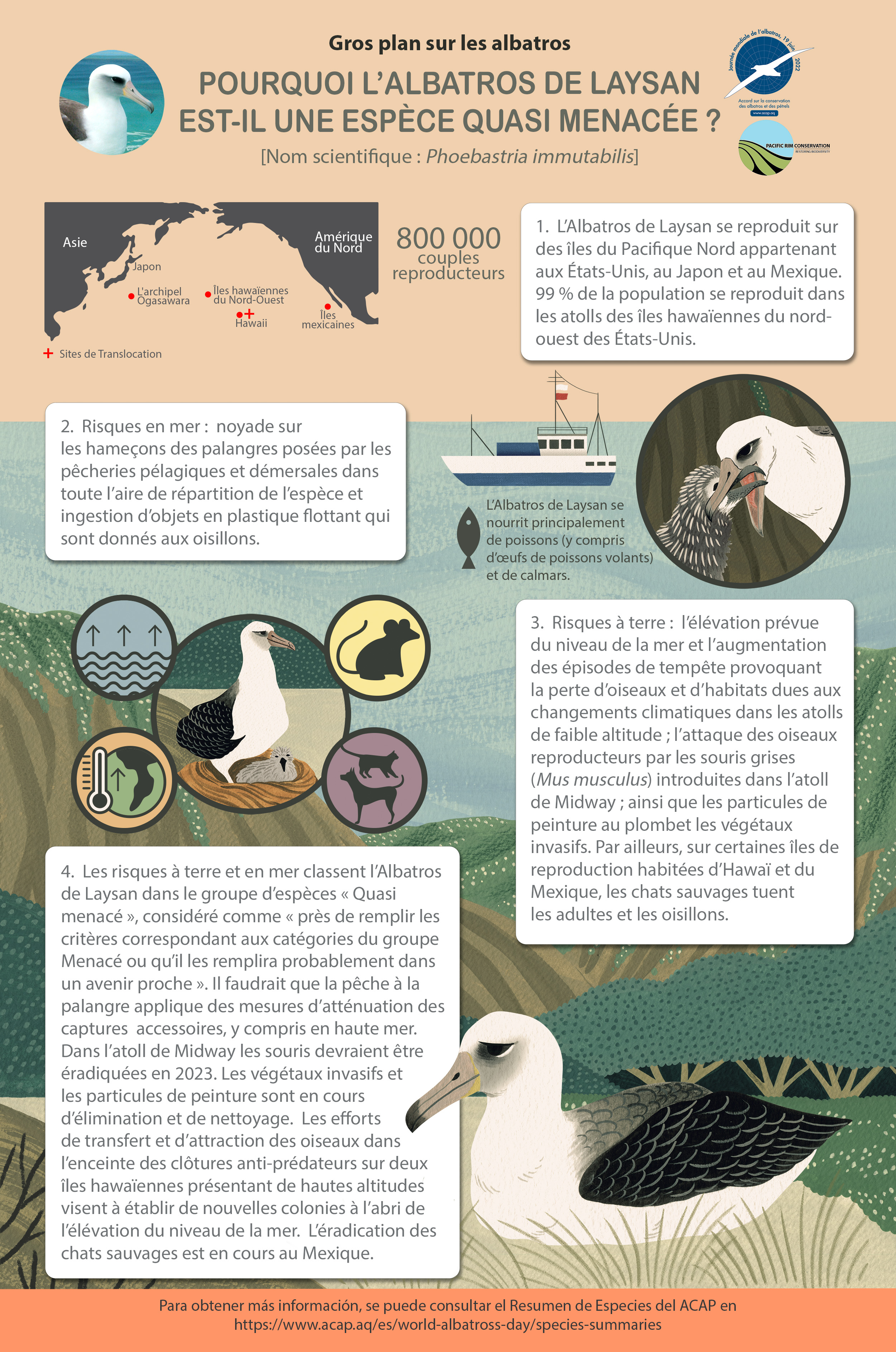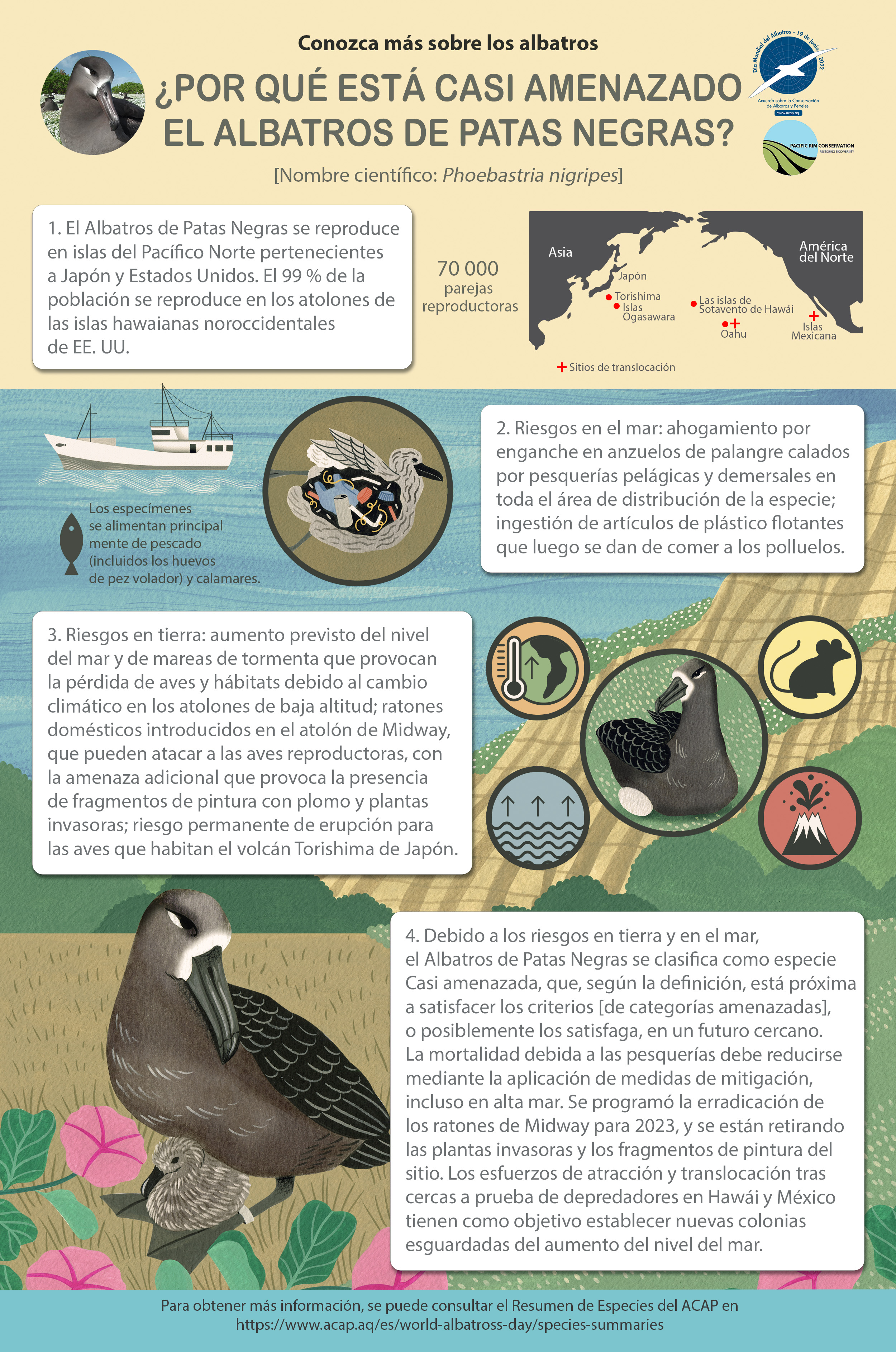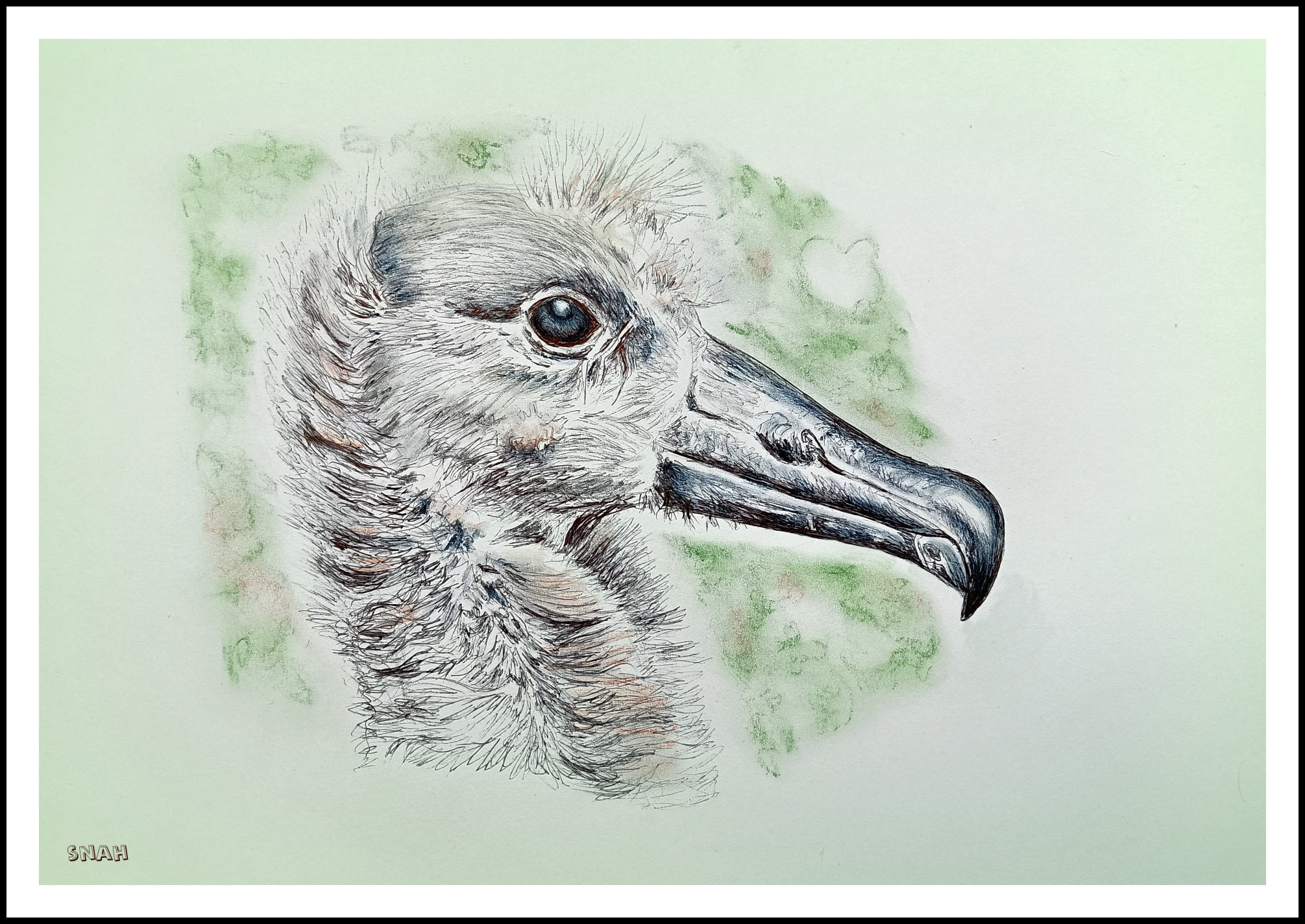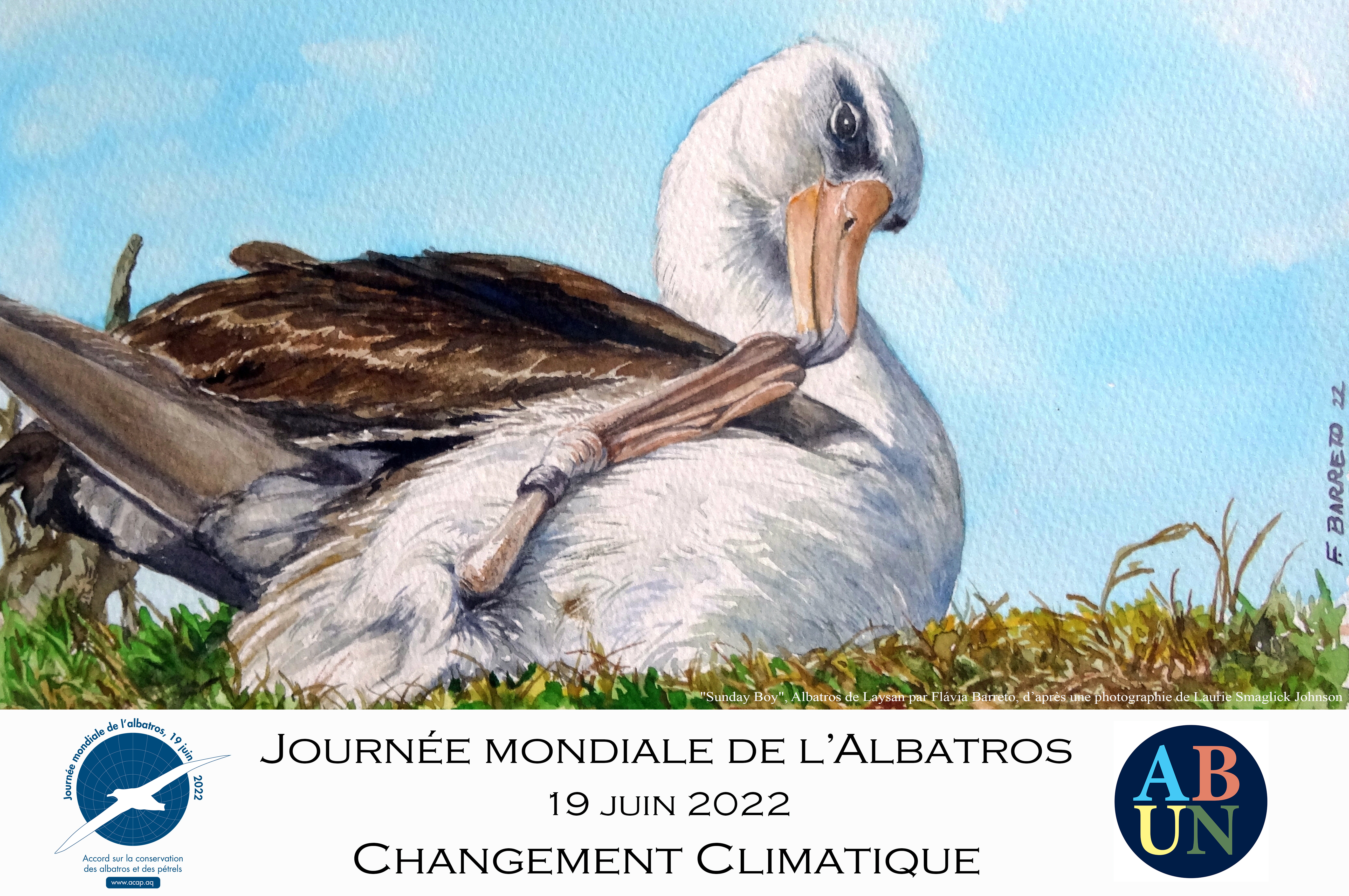
The eight artwork and 12 photo posters produced to support World Albatross Day and its theme of Climate Change on 19 June are now available in all the three ACAP official languages of English, French and Spanish (click here).
The posters feature the Black-footed Phoebastria nigripes and the Laysan P. immutabilis. Both these globally Near Threatened albatrosses have most of their breeding populations on the low-lying atolls of the USA’s North-Western Hawaiian Islands. These atolls - and their breeding seabirds - are all at risk from predicted sea level rise and increases in the number and severity of storms that result in flooding, both considered a consequence of climate change. Storm floods have even caused at least one small sandy islet to disappear into the sea, losing breeding sites for several thousand albatross pairs (click here); elsewhere in the island chain, as on Midway Atoll, storms have caused flooding of albatross nests and loss of chicks close to the shore.
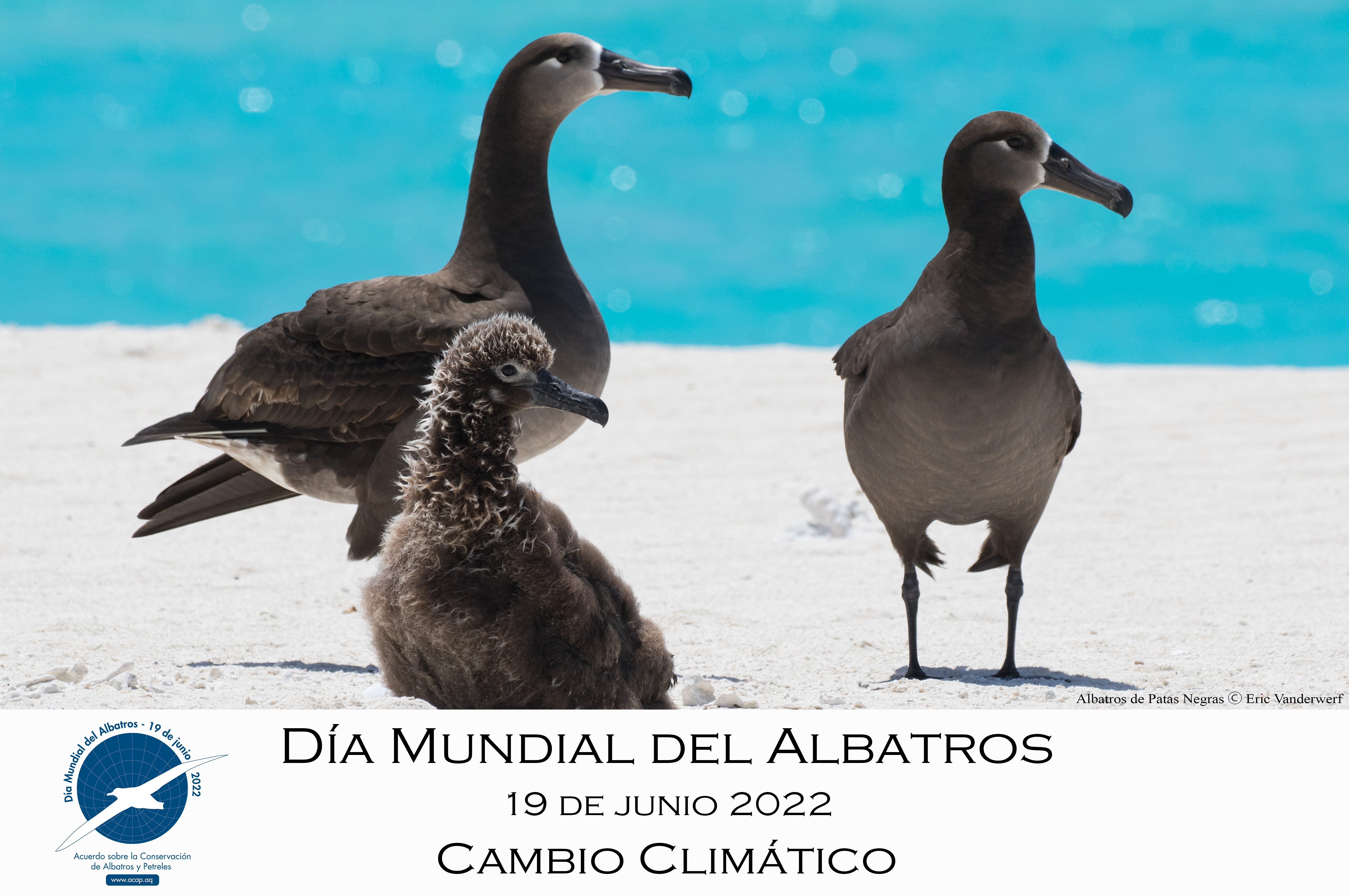
Thanks are due to the five photographers and the eight artists of ABUN (Artists and Biologists Unite for Nature) who are identified on the posters, and to ACAP supporter Michelle Risi, who designed the posters.
John Cooper, ACAP Information Officer, 08 July 2022

 English
English  Français
Français  Español
Español 

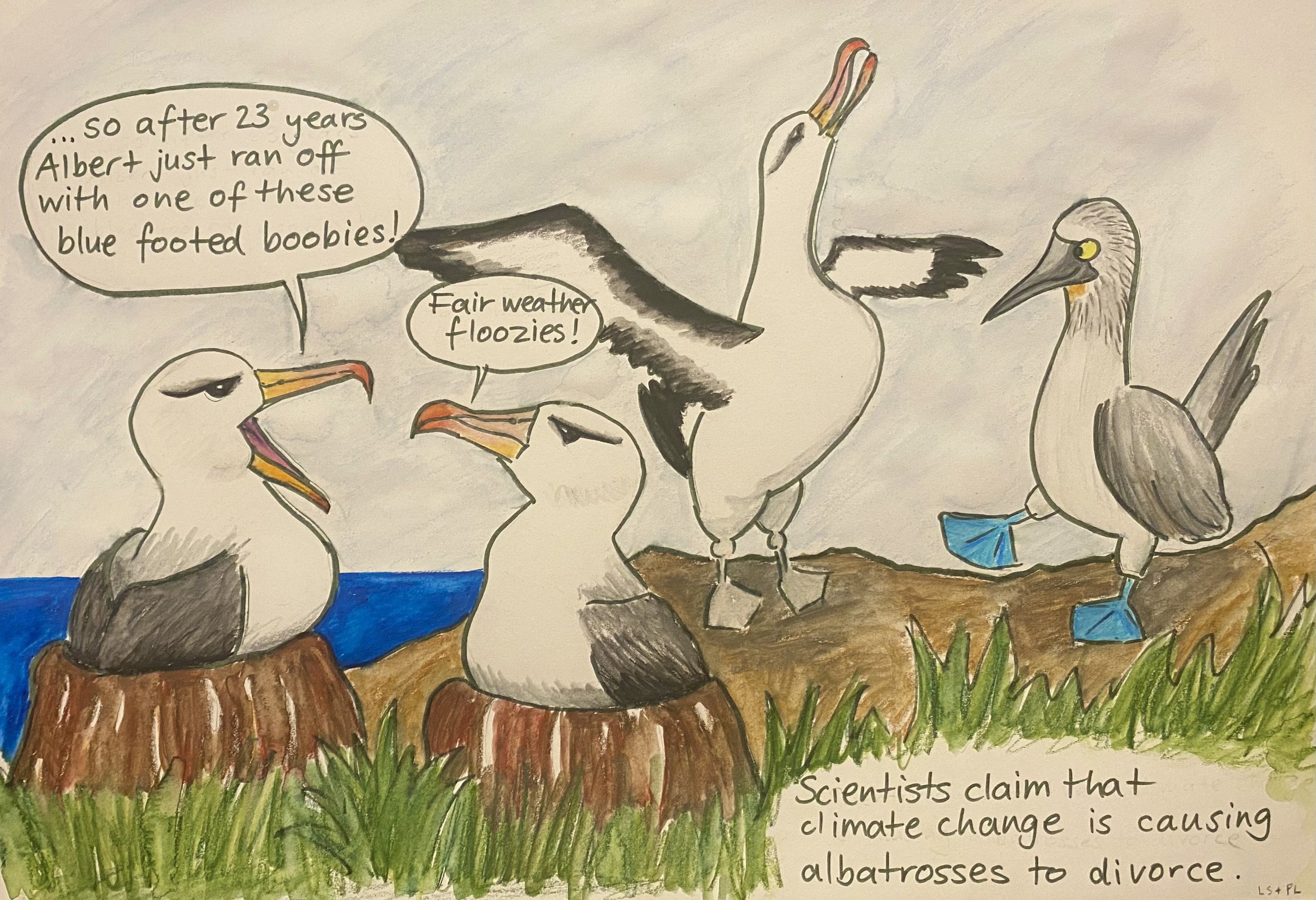
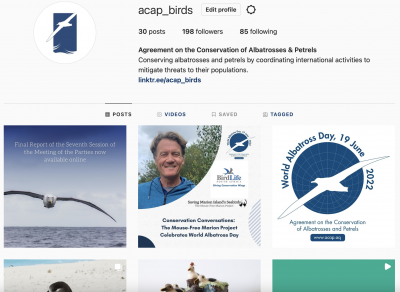 The fledgling ACAP Instagram account is up and flying! Bringing you all your ACAP news and stories of interest about the 31 ACAP-listed species and more, you can find us under the handle
The fledgling ACAP Instagram account is up and flying! Bringing you all your ACAP news and stories of interest about the 31 ACAP-listed species and more, you can find us under the handle 